Current Research Projects:
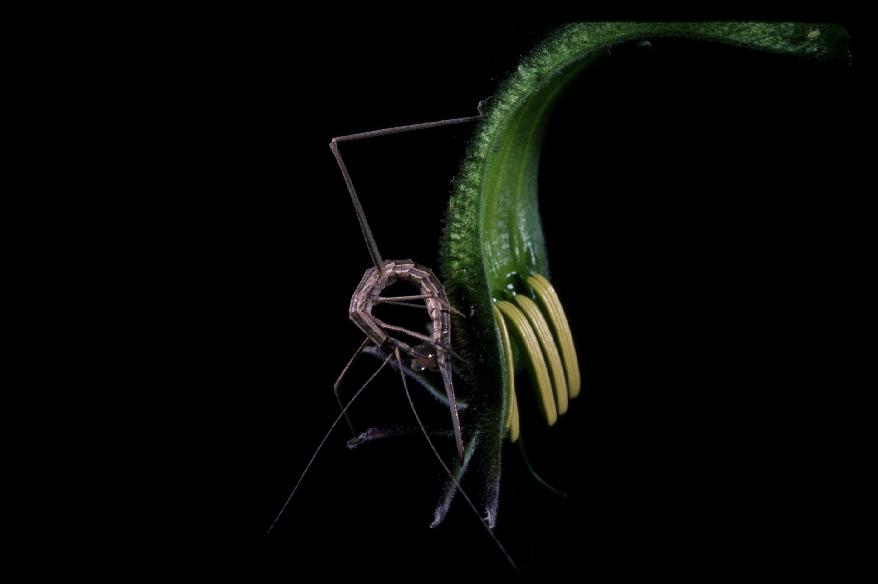
In katydids (Orthoptera: Tettigoniidae) females locate singing males to obtain edible spermatophore gifts. In Anabrus (Mormon cricket) and Kawanaphila the value of gifts is high when nutritious food is scarce thus causing a reversal in the mating roles as hungry females compete for males and their mating gifts (large edible spermatophores – see photo) and males choose mates (Gwynne and Simmons 1990, Gwynne 1993). Projects 1 and 2 (see also 5) follow from this work.
1. How does food quality influence sexually selected traits in females versus males?

The plasticity of larval life history appears to be sexually selected. Our experiments (Gwynne, manuscript) tested the hypothesis that, when their food is restricted, larval female Kawanaphila katydids should conserve the size of traits important to later sexual competition in adulthood. As predicted, with experimental food-stress, larval females showed little loss of body mass whereas male body mass was reduced. In contrast, the sizes of body parts less critical to mating success showed similar decreases in the sexes. The size of the auditory spiracle (with body size controlled) showed a similar trend in pattern to body mass. However, the opposite pattern was found in a species in which role-reversal does not occur. For Conocephalus (right) larval food shortage caused male mass (a trait important to male mating success) to decrease less than female mass (larval food stress caused the auditory spiracle size of both male and female Conocephalus to decrease in size).
2. The genetic basis of apparent phase polymorphism in a katydid
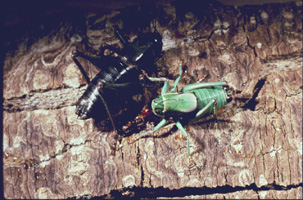
“Role-reversed” Mormon crickets (Anabrus simplex: Tettigoniidae) and those showing typical mating roles are found in different populations. These populations differ in other aspects of their behaviour and biology: role reversed populations are gregarious individuals that move in bands whereas other populations are solitary. In collaboration with M. Ritchie, University of St. Andrews, Scotland, we are using a phylogeographic approach to test the hypothesis that gregarious (see dark-coloured “phase” individual right) and solitary (green individual right) Anabrus are derived from genetically distinct populations. An alternative hypothesis, suggested by studies of phase differences in locusts, is that each gregarious population is descended from a nearby solitary population. Genetic differences will be analysed using microsatellite DNA, which provides greater resolution than other methods and using appropriate statistical methods. M. Ritchie is developing several microsatellite primers for this project from our field-collected samples of solitary and gregarious Anabrus.
3. Separating good genes and material benefits of mate choice
Tree crickets (Oecanthus nigricornis) are a very tractable system for this research because past work in the lab has established methods to rear many generations of this small, easily housed insect, and the previous work has provided important background data including: (1) females increase their reproductive lifespan by consuming gifts – secretions from male dorsal glands (Brown 1997); and, as expected, females show (2) pre-copulatory preferences for this material benefit (Brown et al 1996) and, (3) post-copulatory choice by laying more eggs following insemination by a high quality (large) male.
In recent progress, Bussière (2002) modelled a mate-feeding insect and showed that, depending on the mechanisms by which females exert post-copulatory choice, the optimal donations of preferred males could be smaller than those of rivals. High quality males of gift-giving species, because they attract many females (e.g. Oecanthus: Brown et al 1996) and are favoured with an increased ovipostition rate (Brown 1997), can get away with donating smaller glandular gifts than low quality males. The prediction was supported in Oecanthus by showing that males with an experimentally increased encounter rate with responsive females (mating prevented) provided smaller gifts than males with a low encounter rate (Bussière 2002).
4. Sexually-selected weaponry in orthopteran insects
Elongated jaws and heads (right photo below) are found in male tree wetas (Stenopelmatidae: Hemideina), a group of long-lived, large insects in which extreme sexual selection on males appears to be associated with an evolutionary loss of the male spermatophore gift. We found a mating-success advantage to males with large heads; they use their mandibular weaponry to defend cavities inhabited by large harems of females (see left photo below) which the males monopolize for matings (Gwynne and Jamieson 1999).
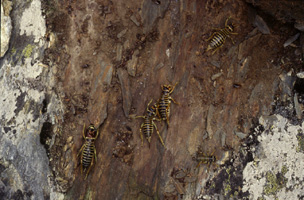
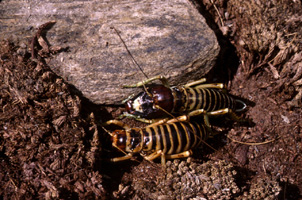
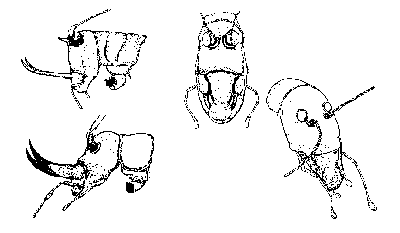
We plan investigate sexual dimorphism in cephalic weaponry (horns or exaggerated jaws) in tettigoniids (katydids) and stenopelmatids (king crickets and weta) (Research funded by the National Geographic Society). We will compare species in which males possess weaponry to other species in which females exhibit horns or elongated jaws. This variation in weapon elaboration offers an exceptional opportunity to examine sexual selection and ornaments for competition, including the hypothesis that female weapons evolve in species with a sex-reversal in sexual selection (measured using both behaviour and parentage estimates).
A central study is Ph.D research by C. D. Kelly which will test the hypothesis that intensity of sexual selection on males correlates with degree of sexual dimorphism in head and jaw size both within and among species of New Zealand weta (Hemideina species). Parentage data will be used to determine number-of-mates x number-of-offspring regressions (sexual selection gradients) for each sex from harems and males collected in the field (and offspring hatched from eggs).
5. Role-reversed mating systems in dance flies
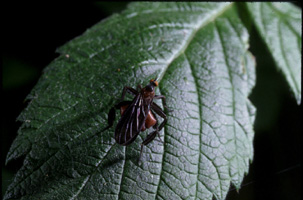
The natural history of a gift-giving dance flies (Rhamphomyia longicauda), indicates that it may be a useful for a study that combines two main research interests in our lab: a sex-role reversal and the potential for mate choice – in this system by males – for both material and genetic benefits. Behavioural interactions within the all-female swarms of these slow moving insects are easily observed and filmed. Funk and Tallamy (2000. Anim Behav 59:411-421) concluded that the inflated abdomen of females (see photo on right of a female inflating her abdomen in preparation for entering a flying swarm) was an unreliable signal to males of the size of eggs she carries, thus females may deceive males in order to obtain a mating gift. However, abdominal sac size does provide some information about egg size and is a reliable signal of number of eggs, thus providing some support for the hypothesis of an immediate benefit for male mate choice. Alternatively, the advantage for male choice may be to sire attractive daughters (a good genes hypothesis).
